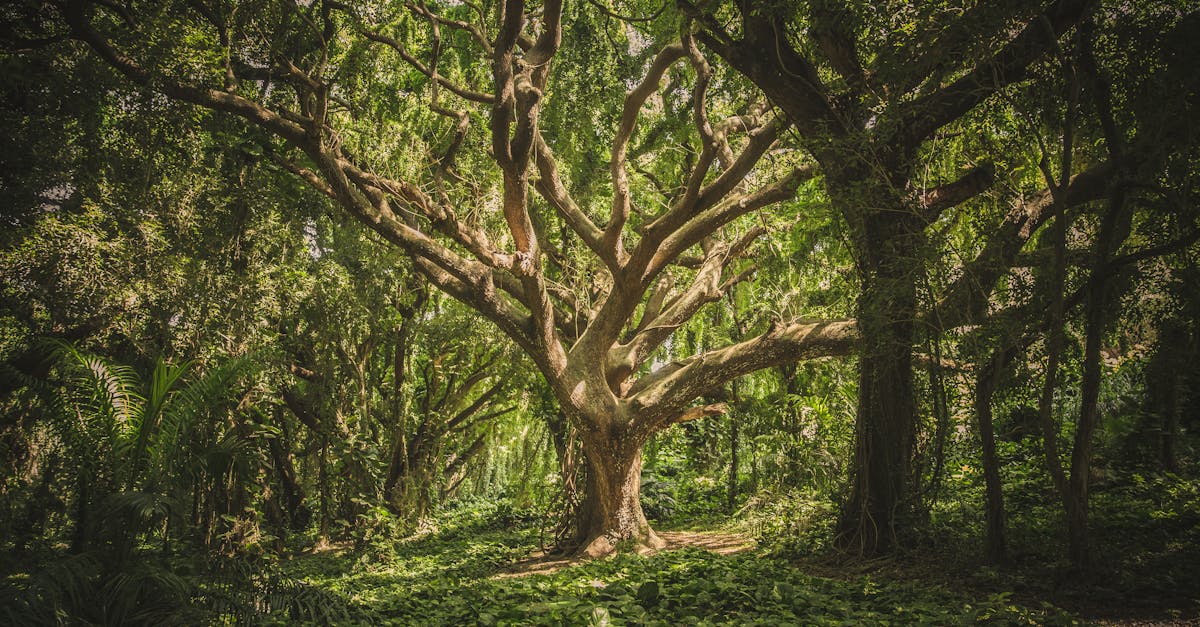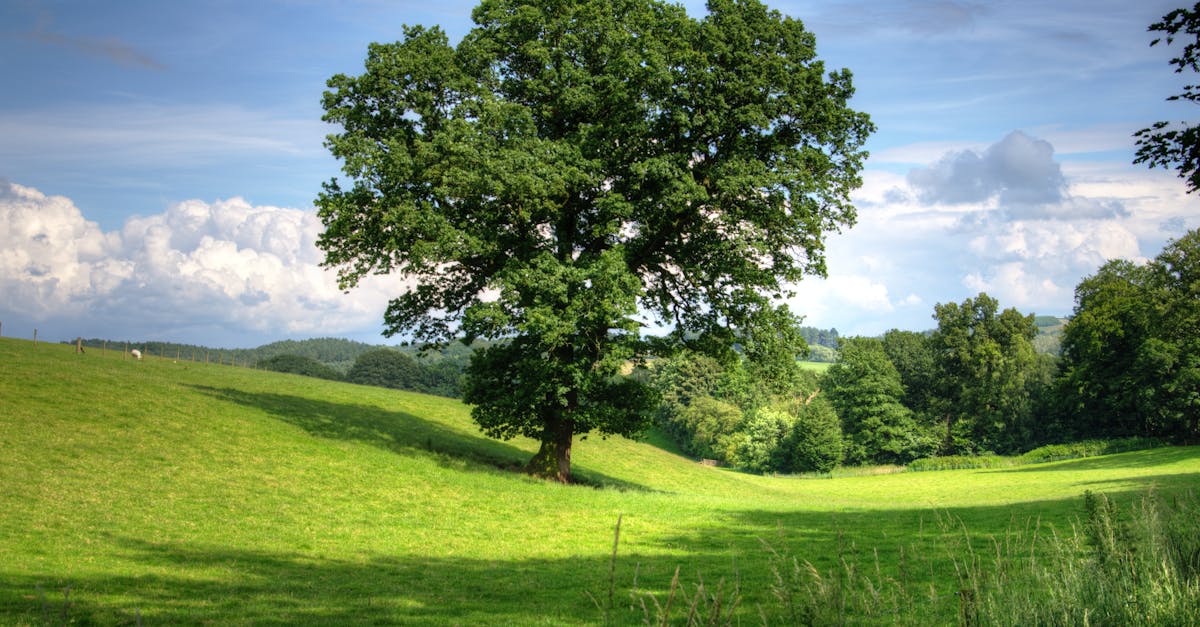
Watering the Newly Planted Tree
Watering is essential to nurture the growth of a newly planted tree. Adequate hydration supports the establishment of roots, helping the tree withstand environmental stressors. During the initial phase of Tree Planting in your garden, provide enough water to keep the soil moist but not waterlogged. The frequency of watering depends on various factors such as weather conditions, soil type, and tree species. Generally, it's recommended to water deeply and less frequently to encourage the roots to grow deeper into the soil.
As you establish a routine watering schedule for your newly planted tree, consider the importance of maintaining consistent moisture levels. In the early stages of Tree Planting in your yard, check the soil moisture regularly by feeling the top layer of soil. Adjust the watering frequency based on the moisture levels to ensure the roots receive adequate hydration. Remember that overwatering can be as harmful as underwatering, so finding the right balance is key to promoting healthy root growth and overall tree development.
Establishing a watering schedule to promote root growth
Establishing a watering schedule to promote root growth is crucial for the success of the newly planted tree. Careful attention must be paid to the water requirements of the tree, especially during the first few years of growth. Adequate watering helps the roots establish and grow deep into the soil, providing stability and access to essential nutrients.
Tree planting in the early morning or late afternoon is ideal to minimize water evaporation. Depending on the tree species and soil type, a general guideline is to water deeply but infrequently. Overwatering can lead to root rot, while underwatering can stunt root development. Monitoring the soil moisture and adjusting the watering schedule accordingly is key to promoting healthy root growth and overall tree establishment.
Mulching for Moisture Retention
Mulch is a key element in promoting healthy tree growth by aiding in moisture retention. After planting a tree, applying a layer of mulch around the base helps to conserve soil moisture, reducing the need for frequent watering. This layer of mulch also acts as a barrier to prevent weed growth, which can compete with the young tree for essential nutrients and water. Additionally, mulch serves to regulate soil temperature, keeping it cooler in the summer and warmer in the winter, providing a stable environment for root development.
Choosing the right type of mulch is crucial for effective moisture retention. Organic materials such as wood chips, bark, or compost are commonly used as they break down over time, enriching the soil with nutrients. Spread a 2 to 4-inch layer of mulch evenly around the base of the tree, leaving a small gap around the trunk to prevent moisture-related issues. Regularly replenish the mulch as it decomposes to maintain its benefits for the tree. Remember, proper mulching is a simple yet essential step in ensuring successful tree planting in your garden.
Applying a layer of mulch around the base of the tree
Applying a layer of mulch around the base of the tree is a crucial step in ensuring the tree's health and growth. Mulch helps retain moisture in the soil, regulates soil temperature, suppresses weed growth, and prevents soil compaction around the tree. When applying mulch, ensure that it is spread evenly around the base of the tree, creating a donut shape with the tree trunk protruding from the center. The depth of the mulch layer should be around 2-4 inches but be cautious not to have the mulch directly touching the trunk to prevent rotting.
Tree planting in soil that is properly mulched not only provides essential nutrients but also encourages beneficial organisms to thrive. Organic mulches like wood chips, bark, or shredded leaves decompose over time, enriching the soil with valuable nutrients. Inorganic mulches like rocks or pebbles offer longer-term weed suppression and moisture retention benefits. Remember to replenish the mulch layer annually and avoid piling mulch against the tree trunk to prevent issues such as rot and pest infestations.
Staking for Support
Staking for Support
Staking a newly planted tree is a crucial step to ensure its stability and promote upright growth. This practice is particularly important in windy areas where young trees might struggle to establish themselves without additional support. To stake a tree effectively, place two stakes on opposite sides of the tree, making sure they are positioned outside the root ball. Secure the tree to the stakes using tree straps or ties, ensuring that the ties are not too tight to allow for some movement. Staking should be done at the time of planting to avoid damaging the tree's root system as it grows. Keep an eye on the tree's growth and remove the stakes once the tree can stand on its own, typically after the first growing season.
Proper staking is essential for the health and development of a newly planted tree. By providing extra support, staking helps prevent the tree from leaning or toppling over during strong winds, which can cause damage to the tree's trunk or root system. While staking can be beneficial in certain situations, it is essential not to overdo it. Over-reliance on staking can result in the tree becoming dependent on the support and hinder its natural strength development. Tree Planting in utilizing appropriate staking techniques can aid in the successful establishment of the tree, allowing it to grow and thrive in its new environment.
Using stakes to stabilize the tree in windy areas
Using stakes to stabilize the tree in windy areas is a crucial step in ensuring the newly planted tree's successful growth. Wind can exert pressure on young trees, causing them to lean or even uproot. To prevent this, sturdy stakes can be installed around the tree to provide support and promote upright growth. Staking is especially important in areas with frequent strong winds or where the soil may not offer enough stability for the tree's roots to establish themselves securely.
Tree planting in windy areas requires careful consideration of the type and placement of stakes. Stakes should be long enough to reach below the root ball of the tree and firmly anchored in the ground to offer reliable support. Typically, two to three stakes are positioned equidistantly around the tree and secured with tree ties to prevent damage to the bark. By using stakes effectively, gardeners can safeguard young trees during their vulnerable establishment period and set them up for healthy growth in the long run.
FAQS
How often should I water a newly planted tree?
It is important to water a newly planted tree regularly, especially during the first year. Make sure the soil is consistently moist but not waterlogged.
Do I need to mulch around the base of the newly planted tree?
Yes, applying a layer of mulch around the base of the tree helps retain moisture in the soil, suppresses weeds, and regulates soil temperature.
When should I stake a newly planted tree for support?
Staking a newly planted tree is generally done to provide support in windy areas. Stake the tree at the time of planting to prevent it from leaning or falling over.
How can I establish a watering schedule to promote root growth?
To promote healthy root growth, establish a watering schedule based on the tree's specific water needs and adjust it according to the weather conditions in your area.
Should I remove the stakes once the newly planted tree is established?
It is recommended to remove the stakes once the tree is established and can support itself. Leaving the stakes on for too long can hinder the tree's natural development.


